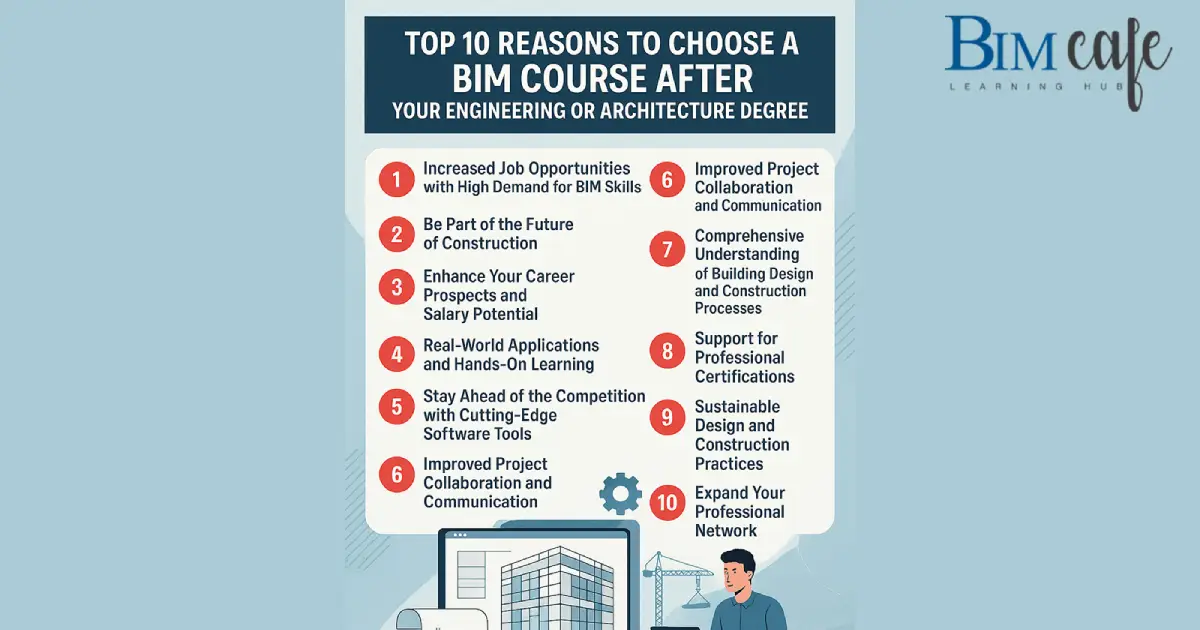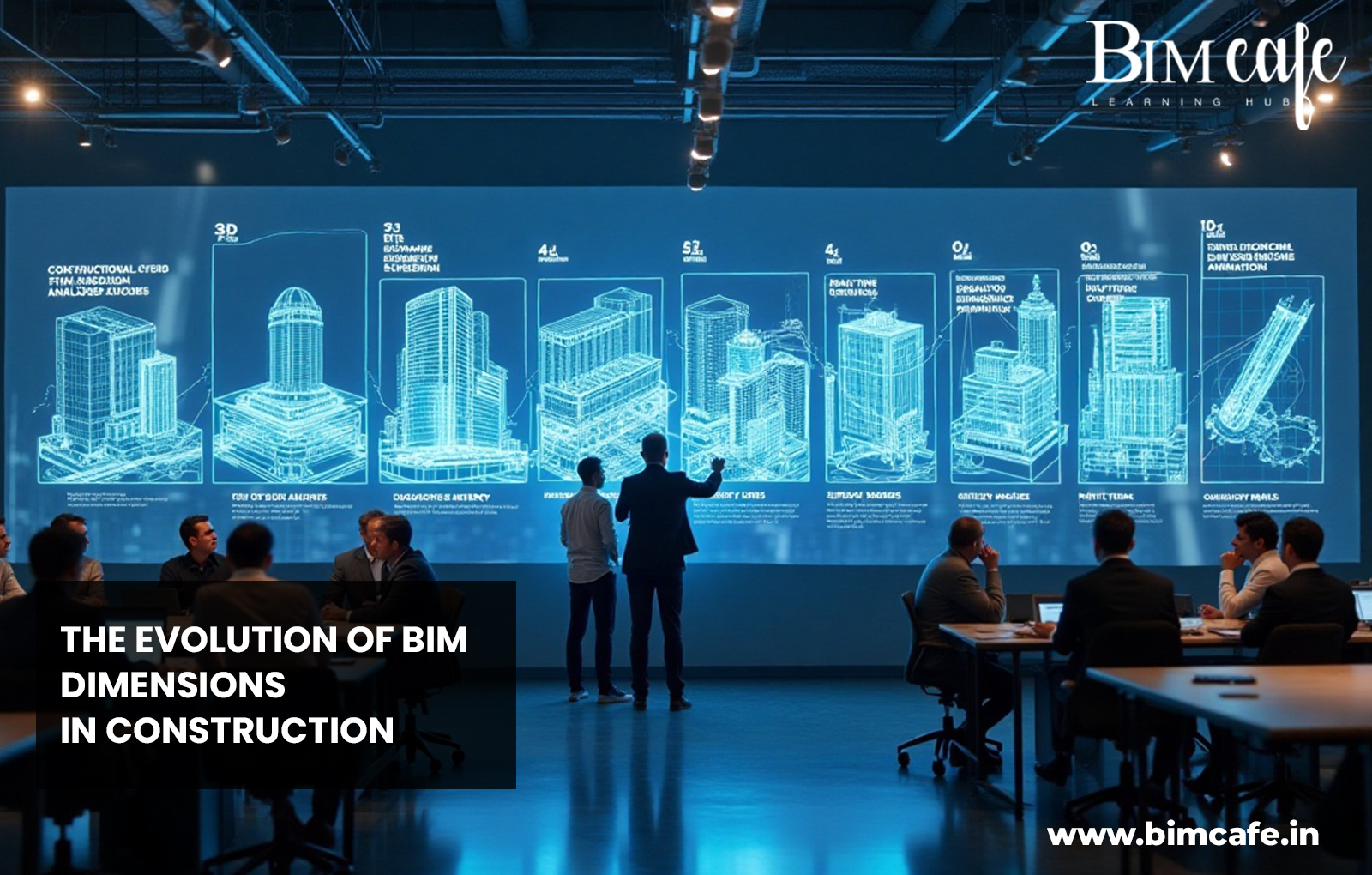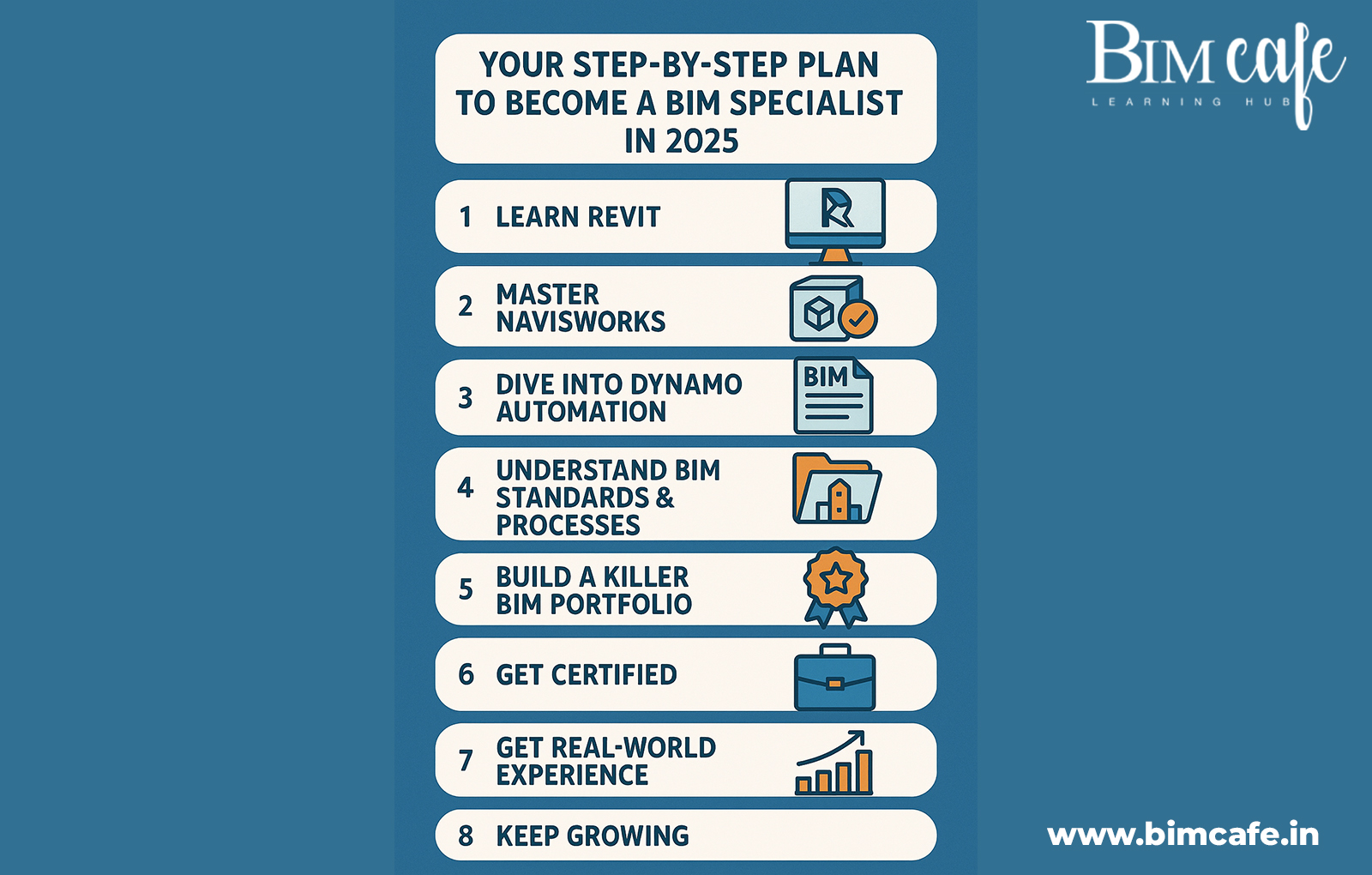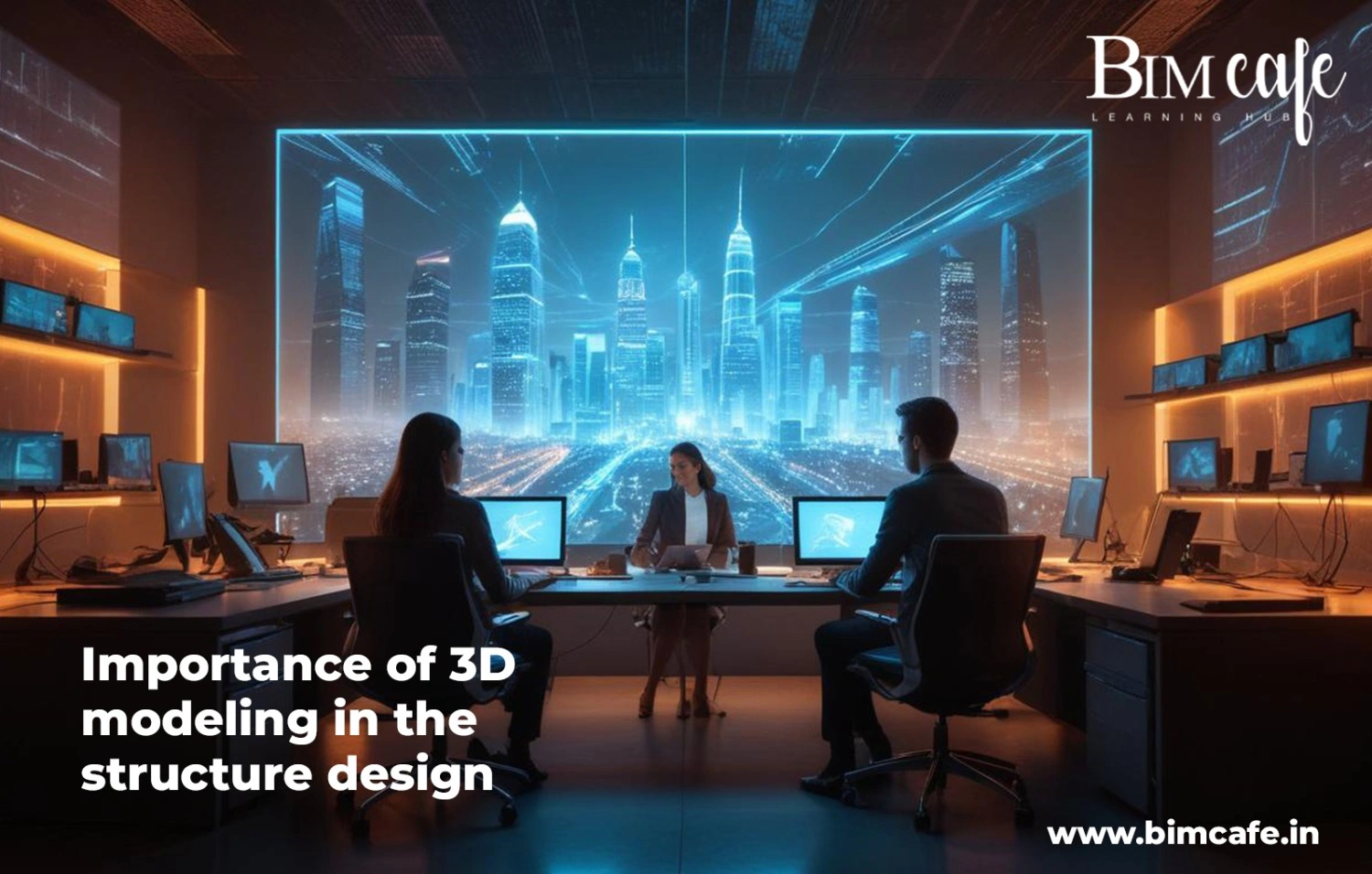
Author: Devika R
February 26, 2025
4 min read
In the bustling world of engineering and architecture, where precision and innovation reign supreme, 3D modeling stands as a beacon of transformation. This cutting-edge technology doesn’t just reshape how structures are visualized; it revolutionizes the entire design process, offering myriad benefits to engineers, architects, and students alike. 3D modeling is the silent force driving modern construction projects from enhancing accuracy to fostering collaboration.
What is Structural 3D Modeling?

Structural 3D modeling is a digital representation of a building or infrastructure project, enabling detailed visualization and analysis. It helps engineers and architects create intricate designs, simulate real-world conditions, and make informed decisions throughout construction. This approach surpasses traditional 2D drafting by offering dynamic, interactive models for a holistic project understanding.
Why is 3D Modeling Important in Structural Design?
3D modeling provides a comprehensive view of structures, ensuring precise design alignment and reducing construction errors. It enables architects to explore complex design possibilities while maintaining accuracy.
For designers, 3D modeling offers realistic simulations, allowing stakeholders to visualize projects before construction. This helps optimize aesthetics and functionality. Students also benefit by deepening their understanding of 3D modeling and structural mechanics, preparing them for industry demands.
Traditional vs. 3D Modeling: A Comparative Analysis
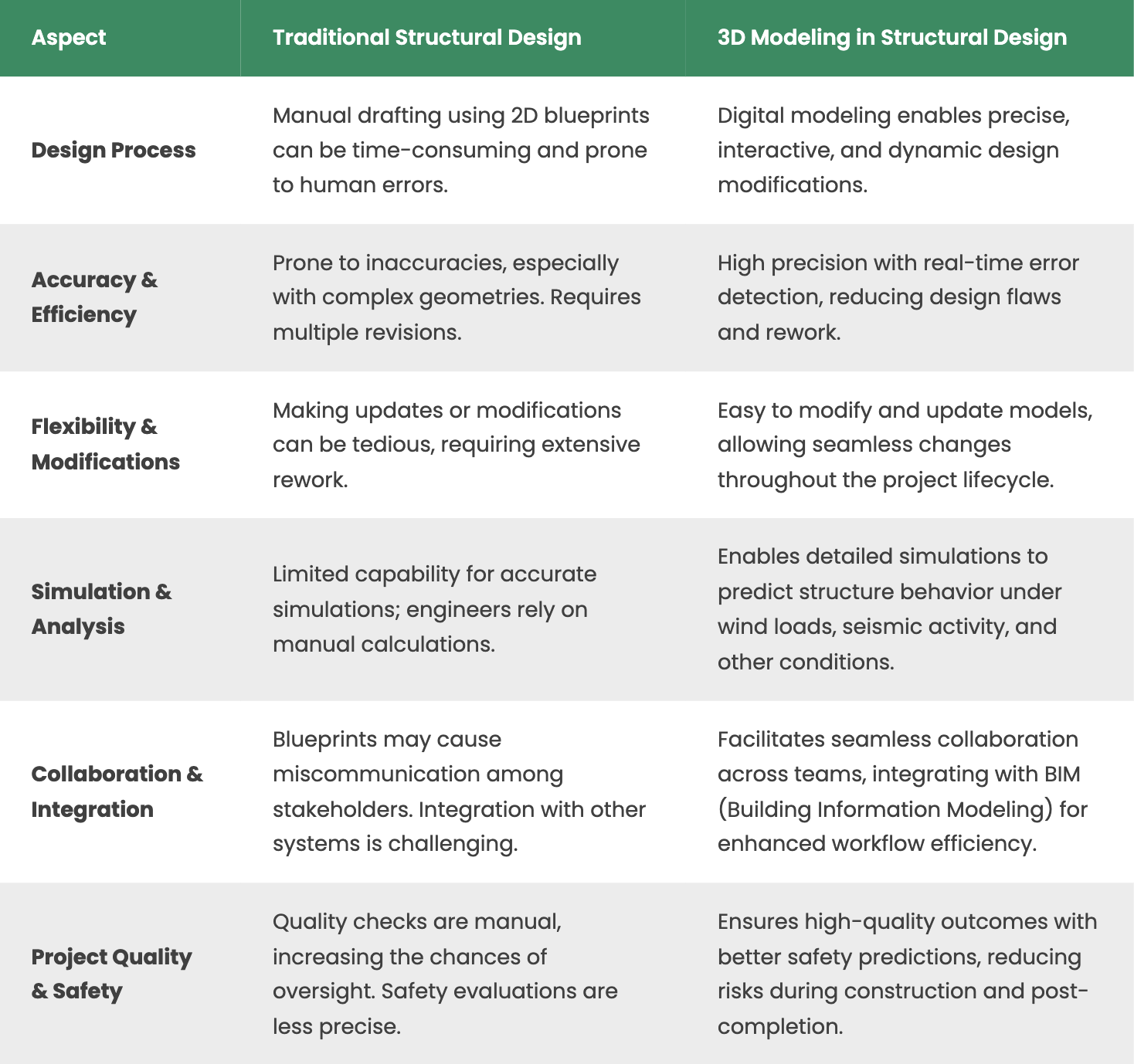
Key Benefits of 3D Modeling in Structural Engineering
3D modeling is a cornerstone of modern structural engineering, enhancing benefits like accuracy and efficiency. Engineers can streamline the design process by leveraging advanced software, reducing costly errors. This fosters better collaboration, leading to successful construction projects.
How 3D Modeling Enhances Accuracy and Efficiency
3D modeling ensures higher precision in measurements and alignment, reducing errors in structures during construction. It helps engineers create seamless digital representations, minimizing risks and optimizing designs. This precision reduces material waste and lowers costs.
Efficiency is another key advantage of 3D modeling, as it speeds up design iterations and virtual testing. Engineers can make quick adjustments, improving collaboration and project timelines. As a result, construction projects are completed faster with fewer delays and disruptions.
Reducing Errors and Rework Through 3D Modeling
3D modeling helps identify potential design flaws before construction begins, reducing costly rework and delays. Engineers can visualize projects digitally, addressing issues early in the design phase. This proactive approach saves money and ensures projects stay on schedule.
Additionally, 3D modeling enhances accuracy, ensuring compliance with industry regulations. Engineers can create precise visualizations, reducing fines and penalties. This is crucial for maintaining the integrity and safety of construction projects, whether residential or large-scale infrastructure.
Role of 3D Modeling in BIM and Green Road Construction

3D modeling integrates with Building Information Modelling (BIM) systems, improving construction projects from design to demolition. It enhances decision-making and collaboration by providing accurate digital representations of a building’s lifecycle.
Additionally, 3D modeling supports sustainable construction by optimizing projects for energy efficiency. Lifecycle analysis and optimising designs help engineers reduce environmental impact. This makes construction projects more eco-friendly and resource-efficient.
Top Software Used in Structural 3D Modeling
- AutoCAD : Popular choice for detailed structural drafting, offering a range of tools for creating precise and accurate representations of buildings. Its intuitive interface and powerful features make it a go-to solution for many engineers.
- Revit : It provides comprehensive tools for building design and documentation. Its robust capabilities allow engineers to create highly detailed models, making it an ideal choice for complex projects. A Revit course teaches engineers to create detailed building design models, making it ideal for complex projects.
- SketchUp : Engineers often prefer SketchUp for its user-friendly interface and versatility. It enables them to create and modify models with ease.
- Tekla Structures : It supports complex structural engineering tasks efficiently. It provides a comprehensive suite of tools for creating detailed and accurate models.
Challenges and Limitations of Structural 3D Modeling
- Steep Learning Curve : While 3D modeling offers numerous benefits, it presents challenges due to the complexity of the tools. Engineers must invest time and effort to master these tools and fully leverage their capabilities, which can be daunting for those unfamiliar with digital modeling.
- High Initial Setup Costs : The initial setup costs for 3D modeling technology can be significant. High-quality software and hardware are expensive, and organizations must weigh the upfront investment against the long-term benefits
- Compatibility Issues Between Software Platforms : Designers often encounter compatibility issues between different software platforms, which can hinder collaboration and data sharing.
- Extensive Data Management and Storage Challenges : Large projects may also suffer from extensive data management and storage difficulties. These require robust solutions to handle the vast amounts of information generated by 3D modeling.
- Overcoming Limitations : Despite these challenges, the benefits of 3D modeling far outweigh the drawbacks. Engineers and designers who adapt to these obstacles can unlock the full potential of this transformative technology and elevate their projects to new heights.
Future Trends in Structural 3D Modeling
- Augmented Reality (AR) Integration : The future of structural 3D modeling is evolving with the adoption of augmented reality (AR). This technology allows engineers to interact with models in real-time, overlaying digital information onto physical environments to enhance visualization.
- Revolutionizing Design Processes : Advancements in technology have the potential to revolutionize how engineers and architects approach design, providing unprecedented levels of insight and control.
- Cloud-Based Collaboration : Cloud-based solutions are gaining traction, enabling enhanced collaboration and data-sharing capabilities. Engineers can now work on projects from anywhere, accessing and updating models in real time for improved efficiency.
- Increased Automation in Model Generation : Increased automation is becoming a key trend in 3D modeling, allowing engineers to generate models more efficiently while reducing manual workload.
- Advanced Analysis Tools : AI-driven innovations are enhancing analysis capabilities, providing predictive insights that help engineers optimize designs and prevent potential issues before they arise.
- Streamlining Design Workflows : AI and automation are improving design workflows by minimizing time spent on repetitive tasks, enabling engineers to focus on innovation.
- Enhancements in Structural Design :AI-driven tools are adding predictive capabilities to structural design, helping engineers anticipate challenges and develop more resilient structures.
The Impact of AI and Automation on 3D Modeling

AI and automation enhance 3D modeling, providing benefits like improved precision and innovation. Predictive maintenance insights help engineers detect issues early, preventing costly repairs and downtime. Automation streamlines design tasks, allowing engineers to focus on creative aspects. By analyzing large datasets, AI improves decision-making and optimizes project outcomes. This enhances efficiency and workflow in structural design.
Best Practices for Implementing 3D Modeling in Structural Design
- Comprehensive Training : Engineers should invest time in thorough training to master 3D modeling tools and maximize their potential.
- Regular Software Maintenance and Updates : Keeping software updated ensures optimal performance and helps professionals stay ahead of industry advancements.
- Effective Collaboration Among Multidisciplinary Teams : Open communication and teamwork foster better design outcomes by leveraging diverse perspectives and expertise.
- Data Security Measures : Designers must prioritize securing sensitive digital models by implementing robust cybersecurity measures.
Final Thoughts on the Evolution of Structural 3D Modeling
3D modeling is transforming structural engineering, enhancing precision and efficiency. Future developments in 3D modeling will drive sustainable design and eco-friendly construction practices. Engineers and architects benefit from these innovations, improving workflows and project outcomes. Learning BIM courses in 3D modeling is essential for mastering digital construction, improving design accuracy, and enhancing collaboration in modern engineering projects.
Staying updated with advancements in structural design is essential for success in the industry. As technology evolves, professionals must embrace change and adapt to new tools. 3D modeling is revolutionizing how structures are designed and built, offering limitless possibilities. By integrating modern techniques, engineers can enhance accuracy, sustainability, and efficiency.

